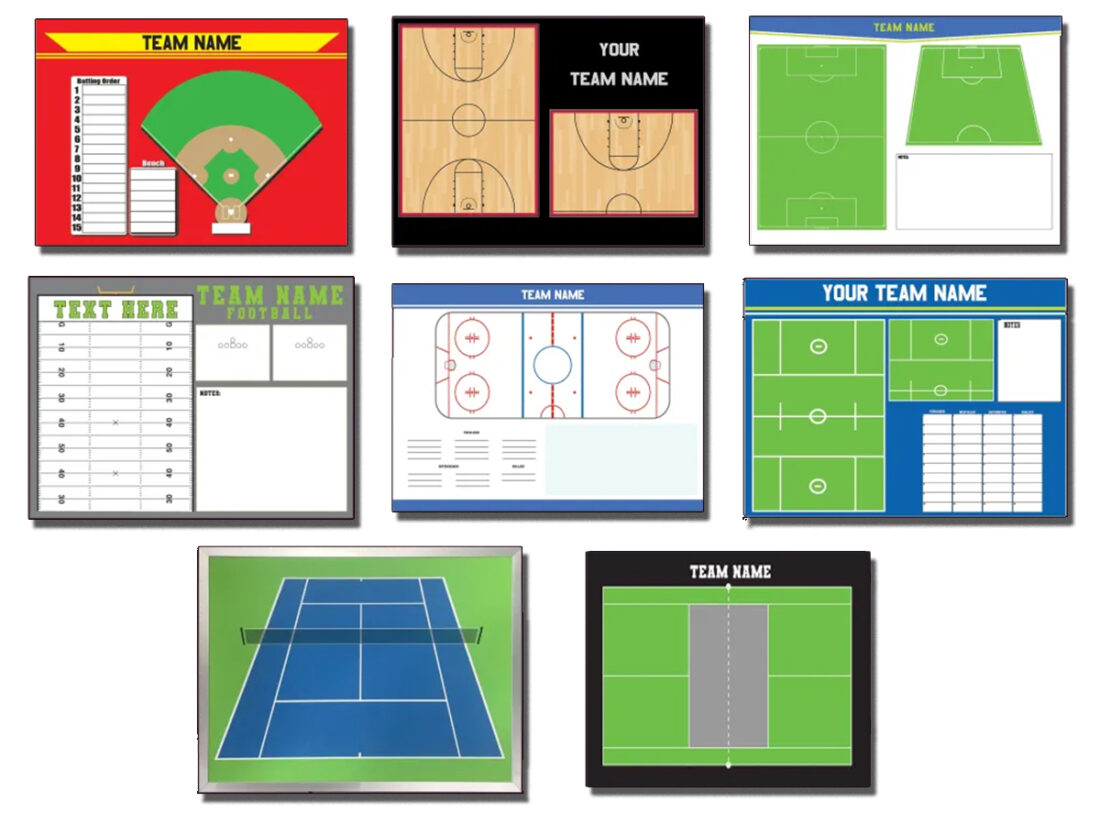Sports coaches often use whiteboards as a valuable tool for teaching and strategizing with their teams. Here are some ways coaches can effectively use whiteboards:
- Tactical Planning: Coaches can use whiteboards to diagram plays, strategies, and tactics. They can draw out offensive and defensive formations, set plays, and movement patterns to help players understand their roles and responsibilities during a game.
- Game Review: After a game, coaches can use whiteboards to review and analyze what happened. They can draw key moments, highlighting both the positive and negative aspects of the game. This visual aid can help players better understand their performance and identify areas for improvement.
- Training Drills: Whiteboards can be used to illustrate training drills and exercises. Coaches can draw diagrams of drills and workouts to ensure players understand the routines and techniques they need to practice.
- Scouting: When preparing for an upcoming opponent, coaches can use whiteboards to display information about the other team. This can include their formation, key players, strengths, and weaknesses. It helps players become more familiar with the opposition.
- Communication: Coaches can use whiteboards to deliver motivational messages, remind players of team values, and set goals. These messages can serve as constant reminders for the team.
- Time Management: Whiteboards can help coaches schedule practices, games, and other team events. They can create a visual calendar that players can refer to throughout the season.
- Player Development: Coaches can use whiteboards to track individual player statistics, goals, and progress. They can set targets and discuss areas where players need to improve.
- Playbook Development: For sports like football, basketball, and soccer, coaches often develop playbooks. Whiteboards are a great tool for creating and explaining the plays and formations within the playbook.
- Interactive Learning: Some coaches use interactive whiteboards or digital whiteboards that allow for dynamic presentations. These can include animations, videos, and live annotations during team meetings, making the learning process more engaging.
- Collaboration: Whiteboards encourage collaboration between coaches and players. They can ask players to draw out plays or strategies to ensure everyone is on the same page.
- Visualization: Whiteboards help players visualize and mentally rehearse their roles and responsibilities, which can be particularly helpful for complex plays and strategies.
- Feedback and Q&A: During team meetings, coaches can use the whiteboard to address questions and provide feedback. This visual aid can help players better understand the information being presented.
To use whiteboards effectively, coaches should invest in quality markers, erasers, and a clean whiteboard. They should also be prepared to adapt their teaching style to the needs and preferences of their team, as some players may be more visual learners than others.




